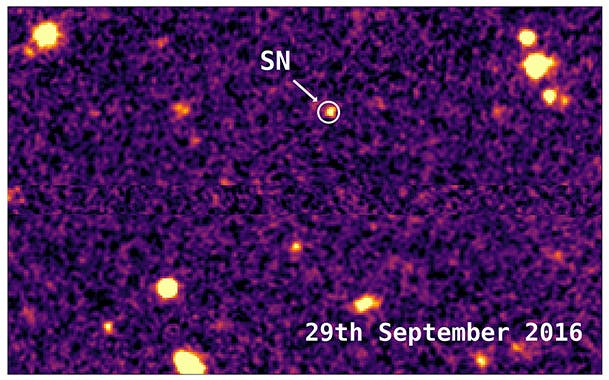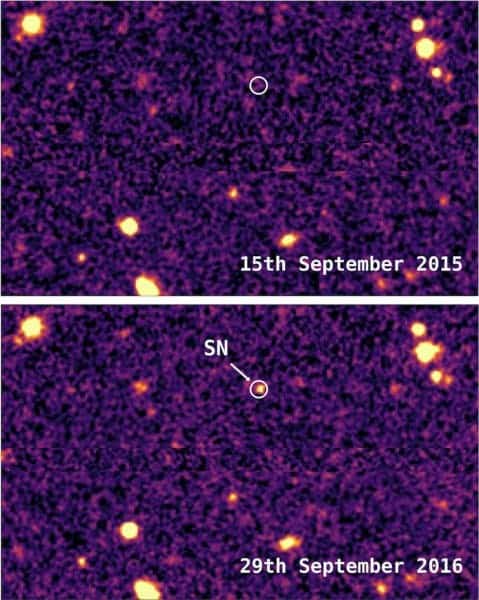Astronomers have identified the most distant (and oldest) supernova discover thus far. The dramatic stellar explosion occurred about 10.5 billion years ago and it’s only recently that its light has reached Earth. What’s more, this is a special type of supernova which can help scientists learn more about these violent cosmic explosions.

The supernova, known as DES16C2nm, was initially detected in August 2016 and was later confirmed using the world’s most powerful ground telescopes: the Very Large Telescope and the Magellan Telescope in Chile, and the Keck Observatory, in Hawaii.
DES16C2nm belongs to a rare class of supernovae called superluminous supernova (SLSN). These are the rarest and brightest type of supernova that we know of, and scientists have only discovered them ten years ago. There’s a much we don’t know about them but what we do know so far is that these are very spectacular.
A supernova is amazing enough in itself. When a star is ready to drop the curtain, it goes out with a bang — a supernova explosion. These are the biggest explosion that humans have ever witnessed and SLSNs can be 100 times brighter than average supernovae. Astronomers think SLSN form after material falls onto rapidly rotating neutron stars — the densest objects in the universe, leftover from supernovae.
“It’s thrilling to be part of the survey that has discovered the oldest known supernova. DES16C2nm is extremely distant, extremely bright, and extremely rare — not the sort of thing you stumble across every day as an astronomer,” said Dr Mathew Smith, of the University of Southampton.
According to Smith and colleagues, the new and exciting observations of DES16C2nm will offer scientists new insight into the nature of SLSN. For instance, ultraviolet light picked up by the observatories on Earth can inform us of the amount of metal that was produced in the explosion but also the temperature of the explosion itself. Both are key metrics that allow scientists to describe supernovas.

Smith is among more than 400 scientists from over 25 institutions worldwide that are involved in the Dark Energy Survey (DES), a five-year project which began in 2013. This year will be the last for the project, which will total 525 nights of observation. Its deep, wide-area survey will record information from 300 million galaxies that are billions of light-years from Earth or 5,000 square degrees of the southern sky.
“Finding more distant events, to determine the variety and sheer number of these events, is the next step. Now we know how to find these objects at even greater distances, we are actively looking for more of them as part of the Dark Energy Survey,” Mark Sullivan, co-author and also of the University of Southampton.
“Such supernovae were not thought of when we started DES over a decade ago. Such discoveries show the importance of empirical science; sometimes you just have to go out and look up to find something amazing,” said Bob Nichol, study co-author and Professor of Astrophysics and Director of the Institute of Cosmology and Gravitation at the University of Portsmouth.
Findings have been published in The Astrophysical Journal.






